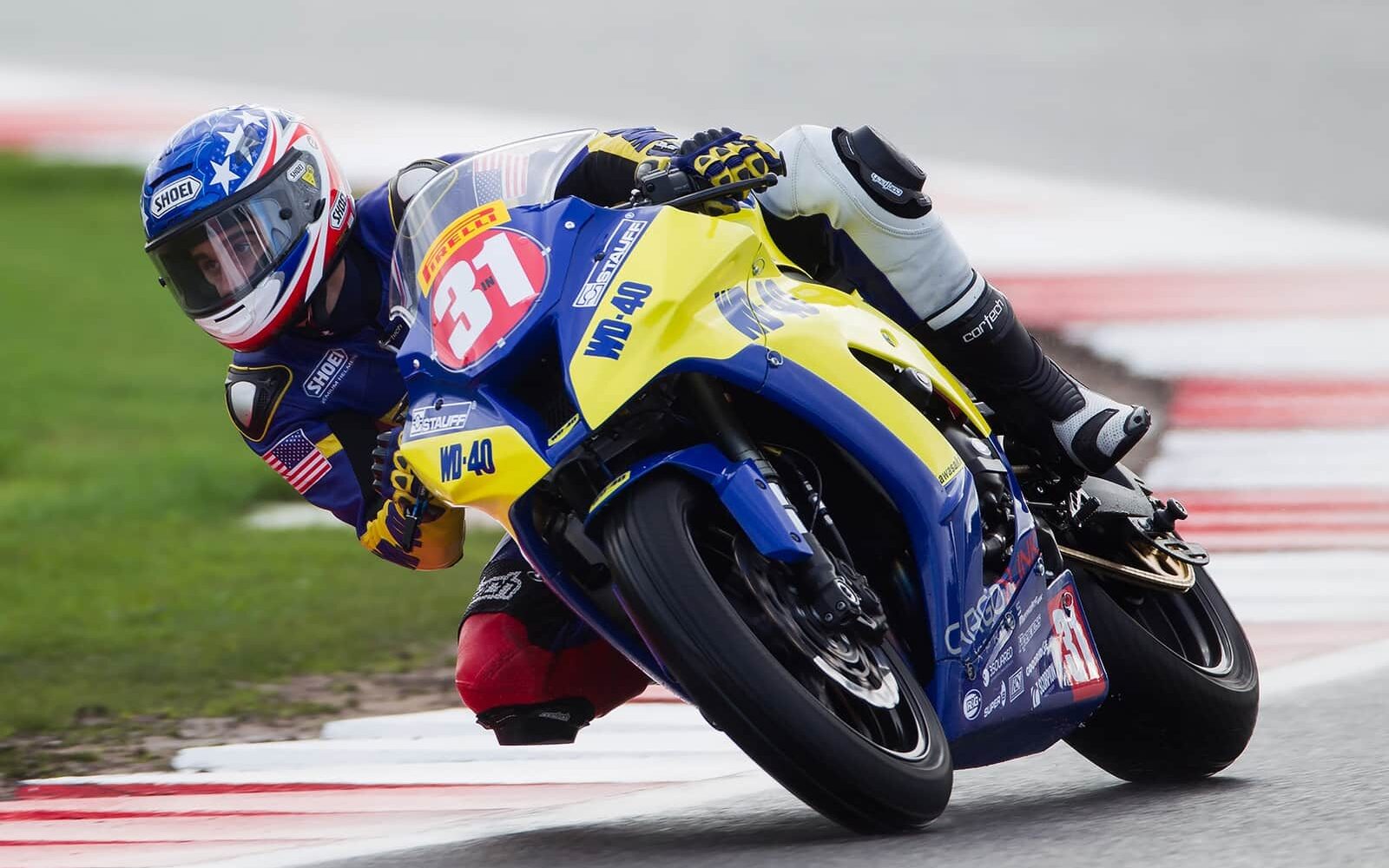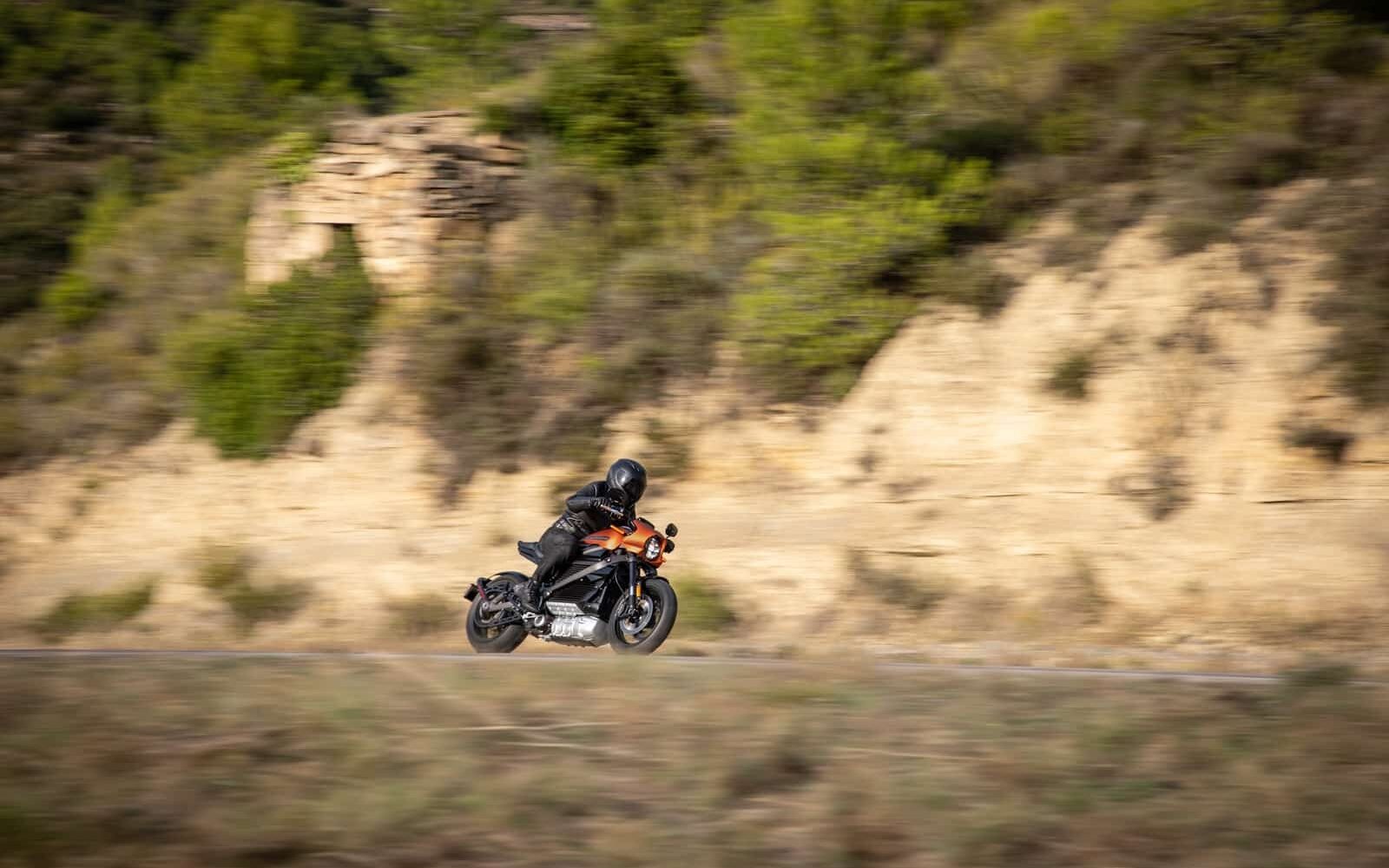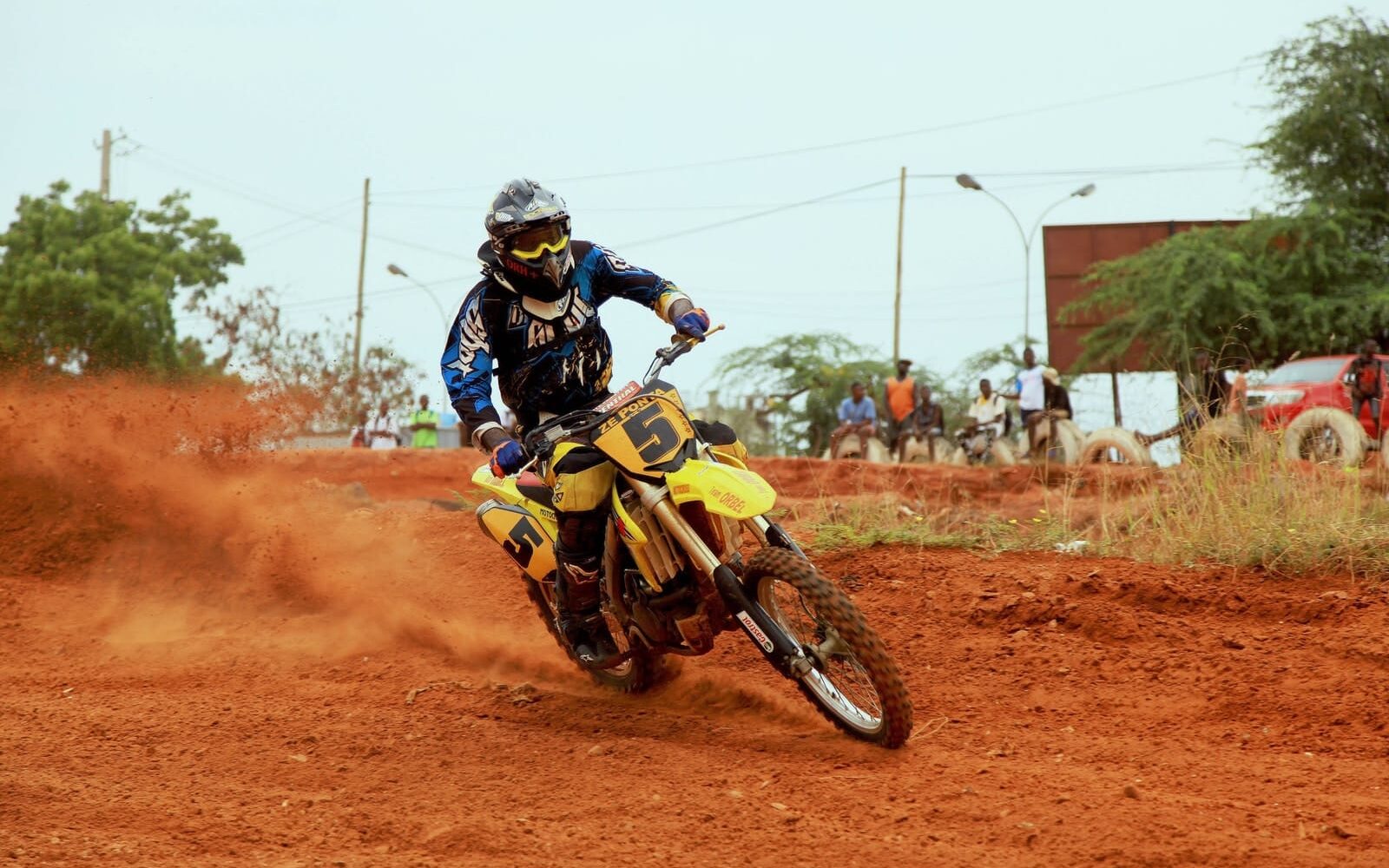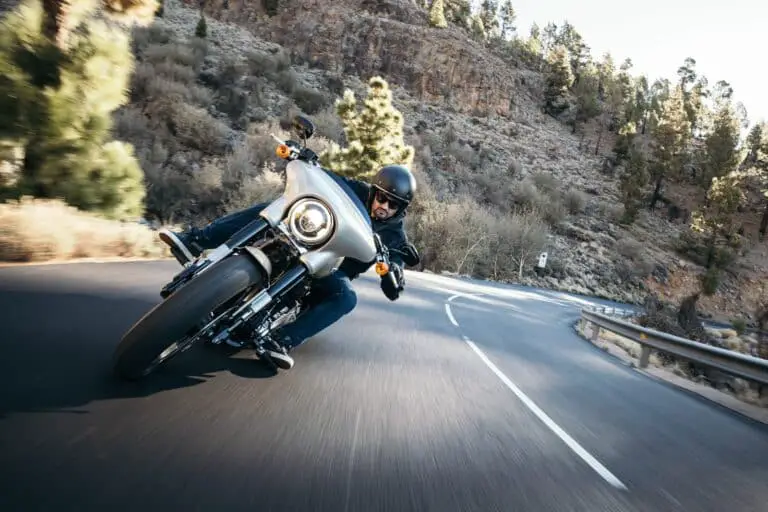Most experienced riders at some point in their riding life have wondered about the topic of trail braking. Frankly speaking, the process of trail braking is a subject for experienced and intermediate riders. It needs a lot of practice, skill, and keen attention to specific details in order to do it safely, without any risk. A straight line, front brake, brake pressure and a lean angle play an elemental role in the process.
Before we dive deep into the subject of how to trail brake on a motorcycle and look into the tips of doing it correctly and safely, let us first understand what exactly is trail braking.
What is Trail Braking?
When you apply the brakes on a motorcycle, your bike will come to a stop. That’s how it works. But what if you want to slow down more gradually? Trail braking is one way of doing that, and many riders find this technique helpful for controlling their speed when descending steep hills or curving around tight corners. It also helps with slowing the bike before stopping at an intersection or traffic signal. Street riders can add lean angle points to release brake pressure for the corner exit. The combination of the braking force and front tire applications enables the process swiftly. Driving at a constant speed, steering geometry, downhill corners, turn in point, corner entry, cornering forces, steering input, tires traction and advanced technique add more grip and safety to riders. Trail braking begins when braking pressure is applied at braking points for riding improvement.
Trail braking can be done in two ways: either by applying only the rear brake pedal while keeping pressure on both front and rear brake levers or by applying just the front brake lever while maintaining pressure on both the rear and front brake pedals. The latter method is simpler but less effective because it provides less friction between the right foot and the ground.
In simple terms, trail braking is the act of slowing down your motorcycle right at the heart of a corner. In complex terms, trail braking is the art of applying brakes from the initial phase of the braking point, all the way up to the apex.
How exactly do you trail brake?

To use trail braking, it is necessary to press both brakes at the same time. The brake pressure should be applied in a gradual manner so that you are able to maintain control of your bike and have an easy stop. This technique can be used in a variety of situations, but it is generally best to start with gradual applications when you are starting out.
However, there are a few things to keep in mind when you’re trail braking:
- As with any other type of braking, be sure to scan the road ahead for obstacles and brake early enough so that you have plenty of time to stop.
- Keep your eyes up and look ahead; do not focus on the ground immediately in front of your bike.
- Use both brakes evenly – do not apply more pressure to one brake than the other. This can cause your bike to skid or even flip over.
- Apply just enough pressure on the brakes to slow down gradually without locking them up completely. If you lock up the brakes, you will lose control of your motorcycle.
The next time you are out on the road, try to practice trail braking. You don’t have to do it all at once – feel free to break down your ride into segments and experiment with this technique as you go along.
In a nutshell, trail braking is a method of applying brakes gradually in order to maintain control of the motorcycle and make a smooth stop without skidding or falling over; if brakes are applied too quickly they may lock up causing loss of control.
So, you need to apply pressure evenly using both front and back levers even though the more effective way of trail braking is using the rear pedal only – novice riders should use the front lever first then switch to the rear later.
Tips to trail braking on a motorcycle

In order to perform the skill of trail braking perfectly and safely, keep these tips in mind –
- Always practice at a speed that you are comfortable in and on a corner that you know extremely well.
- Stay within your limits and do not try to push your comfort zone too quickly. Remember there is no glory in meeting with an accident trying to trail brake.
- If you know the corner really well, you can judge it correctly. But if you try to do it a new corner, first make sure that you judge it critically and accurately.
- Always consider the weather conditions and the surface on which you are riding. If the weather is harsh or the surface is slippery, try to avoid it.
- Be gentle on the brakes and the throttle and do not push too hard.
- Make sure to keep the transition from the brakes to the throttle short but smooth.
- If after a couple of fails, you think you need some help, do not hesitate to take the help of a mentor or get into an advanced motorcycle training course if you really want to do trail braking on your bike.
Is Trail Braking Important for Handling Emergencies During Solo Motorcycle Touring?
Solo motorcycle emergencies: tips and strategies. Trail braking is crucial for handling emergencies during solo motorcycle touring. It involves applying brakes while simultaneously cornering, allowing riders to maintain control and avoid potential hazards. This technique redistributes weight and enhances stability, giving bikers more time to react and maneuver effectively. Practicing trail braking techniques before embarking on a solo tour can significantly improve a rider’s ability to handle unforeseen emergencies on the road.
When to use trail braking?

You can use the technique of trail braking for your motorcycle in any corner that you are riding. Though most riders prefer to use this skill on corners where they are at a high speed. however, it’s not necessary that a rider needs to be at a very high speed when they are attempting trail braking on a corner.
The best time to employ the skillset of trail braking would be when you want to make an abrupt change in direction without losing much momentum. For example, if you were trying to take a sharp turn and wanted to maintain control over your bike throughout then applying pressure on both brakes at once before turning into the apex would do just fine.
You can also apply brake levers gradually while making sure that they are even during slow-speed turns as well; it might prove difficult due to the weight of the bike, but with practice, you will pick up the required skill.
The next time you’re out on your motorcycle, give trail braking a try and see how it can make your riding experience smoother and more controlled. Remember to always practice within your limits, especially when starting out!
5 situations trail braking will help you
Trail braking is used in many situations where you need to slow down or speed up. Here are some of the most common ones –
You want to take a corner at high speeds, but not lose much momentum
For example, you suddenly want to change direction but do not want to lower the speed of your bike.
When coming out from a turn and trying to gain more control over your bike
For example when there’s gravel on the road and you don’t have enough time for an emergency stop.
In order to avoid pedestrians crossing over while travelling at higher speeds (this situation requires utmost concentration)
If you feel that it’s necessary, especially if there isn’t sufficient space available for making turns without slowing down too much. However, this should only be done once proper training has been by experienced riders.
When you need to slow down or stop quickly, but there isn’t enough time for an emergency brake.
For example, if the surface is slippery and it’s hard to apply brakes at once without skidding. Instead of braking abruptly in such a situation, riders usually trail brake instead – this makes the weight transfer slower which gives better control over your bike while applying pressure on both levers gradually until they come into complete contact with each other.
A smooth transition from throttle to brakes as well as the back can also be achieved by practising correct technique during training sessions conducted by experienced professionals who have trained themselves under expert supervision. In some rare cases where more space is available than necessary (such as when riding on wide roads) motorcycles might not even require trail braking.
In such cases, it is better to avoid trail braking as the weight of your bike will be more on its rear tyre and that can result in a skid or even an accident if you suddenly apply brakes during such situations without knowing what you’re doing. Always remember that practice makes perfect – so give yourself some time before using this skill out on real roads.
When you want more stability and control over your motorcycle
For example, if the road is rough or the corner is sharp, you do not want to lose control over your bike trying to put the brakes in a panicking manner. In these situations, trail braking can be the solution when you gradually apply the brake without losing momentum, which in turn gives you a better degree of control over your bike.
Conclusion
Trail braking can be a very useful skill for any motorcycle rider to learn and practice, but only when done within the limits of your comfort. If you’re still learning how to use it then make sure that you do not push yourself while training – remember that safety comes first!
Trail braking can be used in many different situations where one needs to slow down or speed up their bikes.
Always ensure perfect brake control during this technique and the rider should never lose concentration or momentum from applying brakes gradually. Practice makes perfect! Always stay safe on roads even if trying out new techniques such as trail braking! More experienced riders will know better than beginners what technique works best under certain conditions so always consult them before putting yourself on the line.






